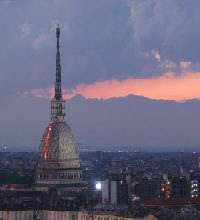+-+Front+cover.jpg)
I Latte e Miele erano un gruppo genovese con un sound caratterizzato da forti influssi classici: un trio (fondato nel 1971) basato sulle tastiere, sullo stile di E. L. & P. o Le Orme.
Dopo l’album d’esordio “Passio secundum Mattheum" (con reminescenze musicali di Bach e testi incentrati sul Vangelo), i Latte e Miele pubblicarono il loro secondo album nel 1973: un altro concept intitolato “Papillon”. Dal punto di vista musicale, “Papillon” (l’omonima suite che occupava il lato “A” del vinile originale) si snoda attraverso una overture e sette “episodi”, ognuno dei quali inizia con il medesimo tema, con variazioni occasionali di strumentazione, tonalità e tempo, durante le quali la voce solista narra la storia. Al cantato segue in genere una sezione strumentale dall’atmosfera appropriata alla trama. Quest’ultima segue uno schema tipico: un ragazzino di legno (una sorta di Pinocchio) che conosce una ragazza, la ragazza sparisce, il ragazzo viene condannato a morte per la scomparsa della ragazza. I testi hanno un loro fascino simile alle narrazioni dei primi Genesis, tuttavia l’atmosfera è il più delle volte cupa e malinconica.
Il resto dell’album conferma gli accenti progressive della band: "Divertimento" è un’azzeccata combinazione di jazz e musica classica, basata essenzialmente sulle tastiere. I brani seguenti comprendono spezzoni tratti dalla “Patetica” di Ludwig van Beethoven e dalle “Quattro stagioni” di Vivaldi, ma anche fantasie jazz ed eletroniche con profusione di sintetizzatori in perfetto stile Keith Emerson.
Nonostante le evidenti influenze di E. L. & P., “Papillon” rimane un ottimo album. Fra l’altro, i componenti dei Latte e Miele erano musicisti preparatissimi, con un’intensa attività live all’epoca (compresa una tournee di spalla ai Van der Graaf Generator, in occasione di uno dei numerosi tour italiani di questo gruppo). Tuttavia, la formula tastiere/basso/batteria tendeva ad essere in certi casi ripetitiva, e le parti vocali erano tutt’altro che originali e convincenti.
Voto personale (scarso / insufficiente / sufficiente / buono / distinto / ottimo / eccellente): Ottimo.
Latte e Miele were a three-piece group from Genoa, Italy, with strongest classical influences - a keyboards trio (formed in 1971) in the same style as E. L. & P. or Le Orme.
After their debut concept album “Passio secundum Mattheum" (with Bach-inspired music and lyrics based on the Gospel), Latte e Miele released their second album in 1972: another concept album entitled “Papillon”. Musically, “Papillon” (the eponymous suite covering the original record's side "A") is organized into an overture and seven acts. Each act begins with a variation of the same air, with occasional variations in instrumentation, key and tempo, during which the narrator sings. This is usually followed by a piece of instrumental music appropriate to the story. The latter can be characterized as follows: little wooden boy (after the Pinocchio fashion) meets girl, girl gets lost, boy is sentenced to death for disappearance of girl. The story itself is as entertaining as most Genesis’s early narratives, yet the accents are pretty awful at times.
The remainder of the album nails its colours to the mast straight away with "Divertimento" and its keyboard-centred combination of jazz and classical music. The following tracks include excerpts from Beethoven's "Pathetique" sonata and Vivaldi's "Four Seasons", jazz developments of themes and Keith Emerson-style analogue synths.
Despite the strong E. L. & P. influences, “Papillon” is a very good album. The band members were excellent performers: they had an intense live activity and even supported Van der Graaf Generator in one of their Italian tours, yet the keyboards/bass/drums formula tended to sound repetitious and the vocals were not very convincing.
My personal mark (very poor / poor / pass / good / fairly good / very good / excellent): Very good.
LATTE E MIELE (1973):
Marcello Giancarlo Dellacasa - basso, chitarre, voce (bass, guitars, vocals)
Alfio Vitanza - batteria e percussioni, flauto, voce (drums and percussions, flute, vocals)
Oliviero Lacagnina - tastiere (keyboards)
TRACK LIST:
1. Papillon
- a. Ouverture
- b. Primo quadro (La fuga)
- c. Secondo quadro (Il mercato)
- d. Terzo quadro (L'incontro)
- e. Quatro quadro (L'arresto)
- f. Quinto quadro (Il verdetto)
- g. Sesto quadro (La transformazione)
- h. Settimo quadro (Corri nel mondo)
2. Divertimento
3. Patetica
- a. Parte 1
- b. Parte 2
- c. Parte 3
4. Strutture
PAPILLON (LATTE E MIELE) - 61,0 MB
.JPG)
.JPG)
.JPG)
.JPG)
.JPG)
+-+Front+cover.jpg)
.jpg)
.jpg)
.jpg)
.jpg)
+-+Front+cover.jpg)
+-+Front+cover.jpg)
+-+Front+cover.jpg)





+-+Front+cover.jpg)





+-+Front+cover.jpg)

+-+Front+cover.jpg)



















